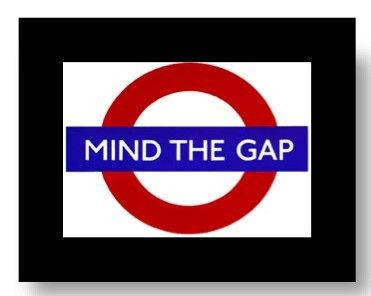Mind The Gap
- Sheri Mackey
- Aug 8, 2022
- 4 min read
Updated: Oct 28, 2022
The phrase “Mind The Gap” was introduced in 1969 by the London Underground to warn passengers of the gap that exists between the train door and the station platform.

Today, it is used as a warning by transit systems worldwide. Just as it is important for passengers to “Mind The Gap” to prevent injury, it is equally important for organizations to “Mind The Gap” so they do not fall into the traps that will keep them from moving forward. Specifically, organizational culture in a global organization is extremely complex and fraught with many potential chasms.
It’s interesting that people think differently, having different concepts of time, space, work, etc., however it is critical to do more than simply notice differences. If we’re not careful to appreciate and value those differences and the contributions that diverse people bring, it is easy fall right into that gap! This may result in waning business results, the degradation of important relationships, the sacrifice of your own success, and ultimately – grave injury… or even death!
In today’s complex business environment, interactions between diverse people is frequent and intensifies the challenges in developing a healthy organizational culture. The more boundaries (cultural and/or functional) crossed, the greater the potential for misunderstanding and conflict amongst stakeholders – but this is also where the potential for the greatest reward lies. To succeed across both boundaries & borders, it is essential to break through the barriers of organizational culture and rigid patterns of thinking.
Today’s leaders are increasingly susceptible to a vicious cycle: repeatedly riding the bullet train of quick fixes. Consider the worst-case scenario in which this dangerous cycle gradually undermines an organization’s capacity to transform itself and remain competitive.
After all, yesterday’s solutions are often today’s challenges.
Transforming organizational culture means fundamentally changing how all employees in an organization perceive, think, and behave across boundaries and borders. Because we operate in a constantly evolving global economy, renewing and transforming the organization remains at the forefront of leaders’ minds – without renewal and transformation a company can not grow in a sustainable way. Yet the incredibly complex problem of understanding and embracing people from a vast array of backgrounds and experience is often addressed as if it were quite simple… or simply ignored.
Some common systemic barriers, or “gaps”, that are pervasive in organizations today (although not all-inclusive by any means), but commonly overlooked:
Mistrust within & across functions, geographies, and cultures
Withholding of information & expertise
Unwillingness to change old habits & traditional practices
Defensive communication, finger pointing, and demeaning behavior
An unwillingness to engage in healthy debate
Little or no cooperation and teamwork across boundaries & borders
Strategic goals not deployed into clear tasks and objectives — making priorities vague and confusing, and accountability near impossible
Overlapping and virtual boundaries are treated as separate fiefdoms, empires, and silos
Reward systems ignore group performance, teamwork, and contributions to process improvement
If these systemic barriers are ingrained throughout an organization, what is the likelihood that employees from different functions, geographies, and cultures will effectively collaborate with one another in cross-functional teams to move the organization forward? I dare say – not very likely! Simply having heard about the quality program in the company newsletter, having received a mission statement on a calendar card/poster/coffee mug, or having learned some new skill in a half-day workshop are not enough to create significant improvements. And when these efforts fail—as they do about seventy-five percent of the time – leaders gravitate from one quick fix approach to another – searching for the promise of an even greater improvement. Since the first change didn’t succeed, let’s now try another, better change! And the cycle continues…still with little success.
Transforming the way in which all employees perceive, think, and behave requires fundamental change in a variety of interrelated systems and processes throughout the organization—which is quite distinct from hoping to transform an organization by relying on a quick-fix approach. Implementing an ongoing series of singular approaches is also quite likely to fail if: (1) the sequence does not address the order of operations, focusing on the change itself vs. what and how things must change (2) the interrelationships among these various approaches are ignored and (3) the diversity of the human component is neglected.
In sharp contrast, a holistic program that addresses culture, skill acquisition, team alignment, strategy, and rewards will provide an integrated sequence of activities that removes systemic barriers to success before proceeding to improving business and learning processes. In reality, leaders often go about the order of operations backwards – trying to change systems and processes before addressing the order, interrelationships, and human elements of change. Implementing a holistic program is no small challenge, but it does allow one to “Mind The Gap” and position the organization for unimaginable success.
What are you doing to “Mind The Gap” and ensure sustainable change in your organization?
I would love for you to engage the discussion and let us know how you mind the gaps in your organization. Please feel free to contact me at sherilmackey@gmail.com. Check back next week for the next installment of Leadership Across Boundaries and Borders.







Comments